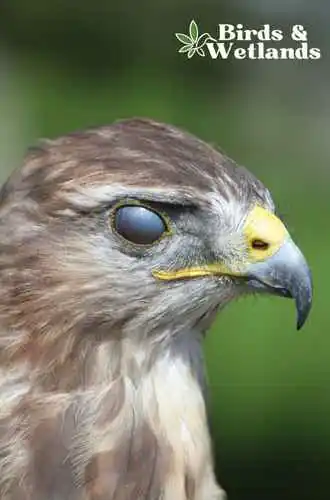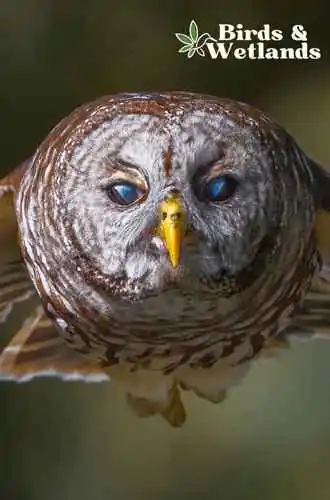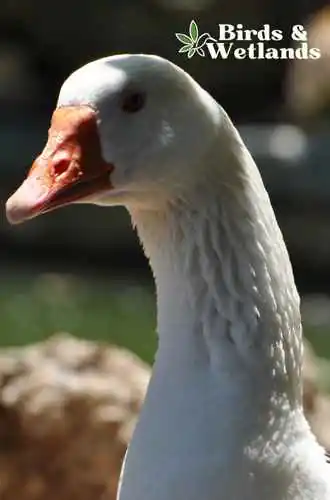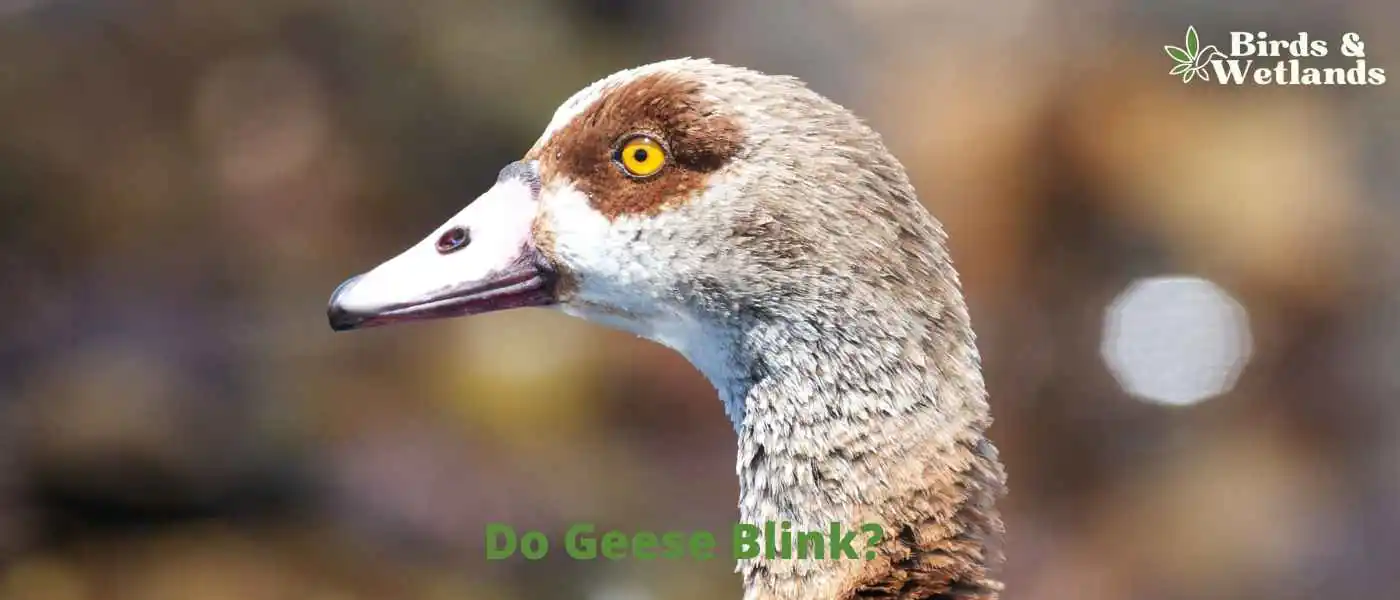Geese and other birds do not blink their eyes in the same manner that humans do. When humans blink, we close our upper eyelid and lower eyelid. Instead, birds have a third eyelid known as a nictitating membrane, which slides across the surface of the eye to keep it clean and healthy.
Blinking is a reflex that helps to keep the eye healthy. When geese use their nictitating membranes or third eyelid, salty secretions from the tear glands flow over the surface of your eye. This washes away small pieces of dust and lubricates the exposed part of your eyeball.
What Is the Nictitating Membrane?
The nictitating membrane, commonly called the third eyelid, gets its name from the Latin word “nictare” which means to blink. It is usually located beneath the other eyelids.

The nictitating membrane is an extra eyelid in many animals. The membrane helps keep the eye clean and moist by sweeping horizontally across the cornea. It also guards the eye against the wind, dust, and other hazards.
The nictitating membrane is mainly translucent or opaque, which allows most species to continue seeing while the membrane is active, though not always totally clear.
Fully developed nictitating membranes are found in a variety of animals. Alligators, crocodiles, some lizards, snakes, turtles, fish, cats, dogs, other reptiles and mammals also have the nictitating membrane.
Most birds have it including peregrine falcons, bald eagle, vultures, wild birds, and the great horned owl. Interestingly, some primates such as lemurs have what they called the third eyelid.
Many species of birds can close the nictitating membrane in their eye so fast with each head movement that the human eye is unable to register it.

Birds move their heads and draw the nictitating membrane more often when they are standing still, possibly to avoid the blurred images that result from rapid head movements.
Even though the specifics may differ between animals, such as the opacity of the membrane or how often it is used. The nictitating membrane serves the same core purpose for all creatures that have one.
Do Geese Have a Nictitating Membrane?
Many birds or avian species including Canada Geese have a nictitating membrane. They don’t close their upper and lower eyelids.
They use their third eyelids the same way humans blink, to clear debris from their eyes and keep them moisturized.
The Bottom Line on Do Birds Blink
Do geese blink? The answer is yes, but they do so in a way that is quite different from the way humans blink.
Geese keep their upper and lower eyelids open and instead draw their third eye lid, called the nictitating membrane.
This special membrane sweeps across the eyeball and helps to keep the eye of the bird moist and clean.

FAQs on Geese and Nictitating Membrane
Do Humans Have a Nictitating Membrane?
In humans, the plica semilunaris is a remnant of the nictitating membrane, a transparent third eyelid in some other mammals and other vertebrates.
Also known as the semilunar fold, the plica semilunaris and its associated muscles are homologous to the nictitating membrane or third eye lid.
However, it is vestigial and no longer serves its original purpose.
Although the plica semilunaris does not have the same function as the nictitating membrane, it helps ensure tear drainage and flushing of debris. Still, it’s not necessary for vision or survival.
Do Ducks Have Nictitating Membranes?
Ducks have what is called the nictitating membranes to moisten, clean, and protect their eyes. The membranes are translucent so anything around the ducks is still visible even when they are closed.
These membranes keep the eyes of the birds from drying out and protect them from the wind and rain when they are flying.
Do Night Owls Have Nictitating Membranes?
Owls, which are known for their excellent night vision which allows them to see in the dark, have nictitating membranes which they use to protect their eyes while feeding their chicks and may close them when attacking prey.

Nictitating membranes are the third eyelid that helps keep the eye of these birds clean and moist. They also help protect the eye from debris and foreign objects.
Is Geese’s Eyesight Better Than That of Humans?
Nature is truly fascinating. Canada Geese have highly-evolved eyesight which is necessary for their survival. Their eyesight is said to be better than human eyesight.
These birds use their vision for navigating in difficult environments, finding food, and avoiding predators.
Canada Geese can see detail at great distances and in low light conditions, which gives them a distinct advantage over other animals.
The eyes of these birds are specially adapted to see movement, allowing them to react quickly to changes in their natural world. This is a good example of animals adapting to their environment.
How Do Geese Sleep With Only One Eye?
When ducks and geese sleep, they close one eye and let half of their brain rest or go into a form of non-rapid eye movement deep sleep.
This way, these birds can keep the other eye open and not let the corresponding half of their brain lose consciousness.
This helps the bird species stay safe while sleeping since they can still see if something is coming and respond accordingly.

Do Geese See Three Primary Colors?
No, this bird species see four primary colors due to the way their retina works. Geese have excellent vision, enabling them to see colors in a way that we cannot.
They can see the colors red, yellow, blue, and green.
This bird species use its green vision to spot feeding grounds with lush grasses, shoots, and weeds to nibble on.
Why Do Geese Tilt Their Head?
Geese have exceptional vision, seeing objects clearly up to three times further than humans can. They must tilt their head to watch a plane or hawk flying overhead.
They also compensate for not being able to see the panorama ahead of them by quickly swinging their heads from side to side.

This action allows them to make the object in front of them visible simultaneously with one eye from two different angles.
This also enables them to see the ground and sky at the same time, giving them near panoramic vision.

